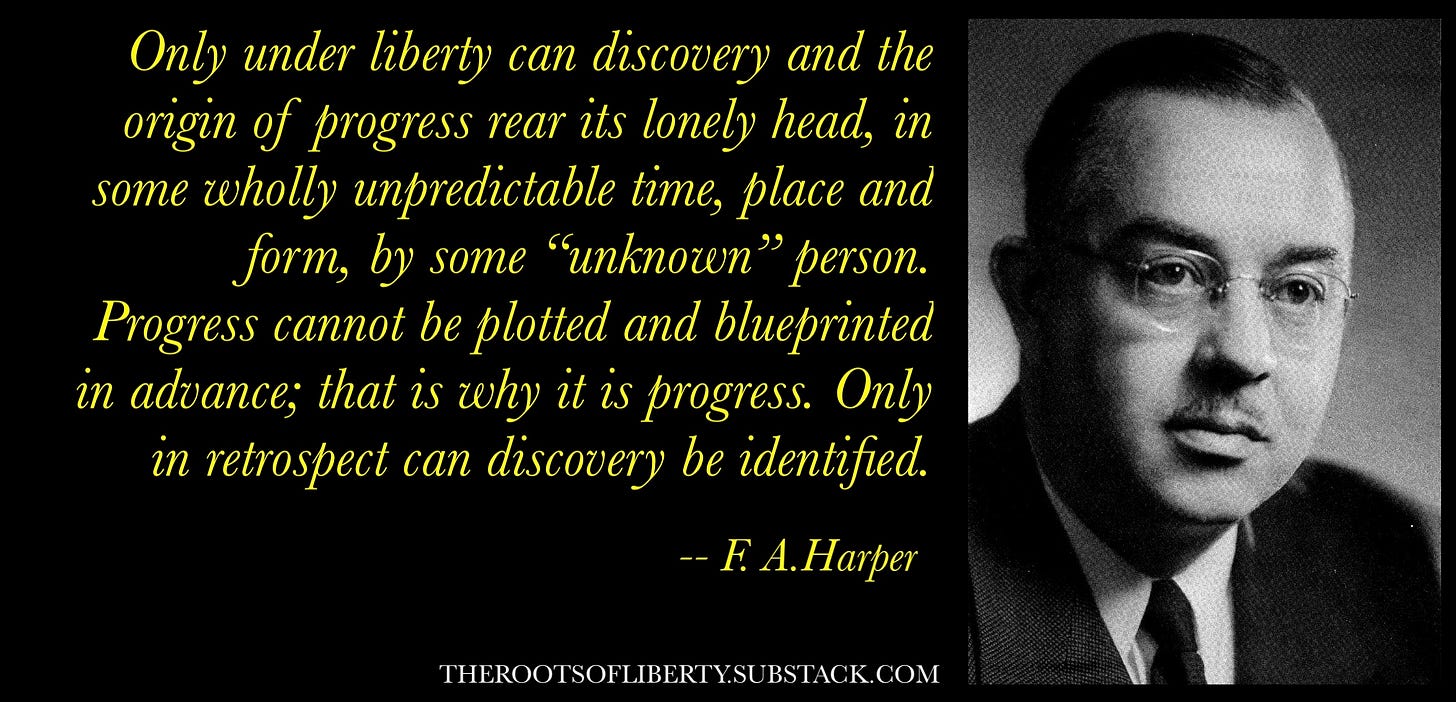Editor’s Note: Our political leaders routinely take a “so let it be written, so let it be done” approach to green energy, erecting impediments to carbon (and nuclear) energy in a simplistic attempt to coerce the private sector into making wind and solar work.
The problem is that expanding wind and solar beyond niche status isn’t yet doable. The technology simply does not exist yet to run the nation solely from those sources, yet the people running our lives are talking, legislating, and regulating as if the only obstacle is corporate greed and Luddite intransigence.
Originally published at The Roots of Liberty September 2016.
A wonderful quote appeared in my newsfeed the other morning:
Progress cannot be plotted and blueprinted in advance; that is why it is progress.
It reminded me of an anecdote from my engineering days. In an all-hands meeting regarding the technology project I was working on at the time, one of the other engineers replied to a query about our “widget” achieving a certain “measurement” (and, yes, I’m being deliberately vague – this was a government project that has since been declassified but that I’m still not going to talk about). His response, which I paraphrase, was:
If you want X, you need time, money and manpower. If you want Y, you need an invention.
Obviously, Y was the desired goal, and better than X. His observation distills to its essence the nature of innovation and progress AND the futility of using central planning and top-down control in pursuing it.
“Time, money and manpower” is something we all understand. It’s the bridge between an idea rooted in the known and the actualization of that idea. It’s the difference between a sketch of a house and the house itself. Or a car, or a hammer, or a coffee mug, or, for that matter, a bridge. We know how to make all those things.
An invention, on the other hand, is something that’s not known. It cannot be mandated. It cannot be presumed. It cannot be decreed, it cannot be willed or paid into existence. The path to the invention is one that the inventor creates himself. The inventor blazes a new trail rather than following a known road. The inventor starts with an idea, but the idea is the only “known” element of invention, and it’s often minuscule in comparison to what’s not known. Thomas Edison famously noted:
None of my inventions came by accident. I see a worthwhile need to be met and I make trial after trial until it comes. What it boils down to is one per cent inspiration and ninety-nine per cent perspiration.
An idea without the knowledge of how to actualize it is not something that can be actualized simply via time, money and manpower. Sure, we can invest time, money and manpower into an idea, but that investment may not produce results. Or, it may turn out that some progress is made, and additional investment seems prudent. Or, it may turn out that the idea proves unworkable. Or, it may turn out that a wholly different idea or invention emerges.
All these possibilities and more are managed when one invests his own resources. Whether it be the lone inventor, the venture capitalist funding interesting ideas and research, or the big corporation funding its R&D divisions in search of the next great invention, the link between investment and outcome creates order and efficiency. Even private universities, relying on money they compete for (students, donors, research grants from private corporations), will manage their resources and their expectations. The key to chasing inventions lies in managed expectations. We must understand that not all ideas bear fruit, that not every effort will produce a successful invention, that there are some things that may not be possible today, and that “invention” is a far, far different creature than construction or fabrication of something that is known. One is not a longer road than the other, it is a non-road to an unknown and possibly nonexistent destination.
Whence ideas? An old proverb notes that “Necessity is the mother of invention,” but inspiration can come from anywhere. Legend has it that Isaac Newton’s inspiration for developing the Laws of Gravitation was an apple falling on his head (and, by some reports, there is actually some truth to the legend).
By now, you know the punch line. The worst possible manager of the invention “process” is the government. Efficient use of resources is alien to the government. Freedom to follow an idea chain in whatever direction it chooses to take is incomprehensible to bureaucrats. Being told an idea doesn’t work is anathema to petulant and egotistical politicians.
Arguments for public funding of research often stem from the premise that some fields of study do not produce “returns” on investment, or that the time horizon is too long, or that there’s no one who funds research “for the common good,” or some other altruistic motives. Apart from the falsehood of the assertion – there are plenty of philanthropic rich people who fund pure research and provide university endowments, the great big joke is that government is somehow more altruistic than private individuals. If we know anything from centuries of observing government in action, it’s that selfish motives win out. Richard Dawkins’ subversion from within deconstruction of altruism is especially true in government. When other people’s money is in play, those who covet it are especially driven and those who manage it are poorly motivated.
A couple years after the “you need an invention” meeting, when what we were working on had moved in a different direction, my big boss asked me to explore an idea for using our “widget” in a new manner. I spent a couple days working on the idea, and concluded that it simply wasn’t viable. Being a young pup in my late 20s, I was nervous about telling Big Boss that his idea didn’t work. But, I memorandized my analysis, brought it to him, and said “I don’t see that this would work.” He responded with a shrug and “OK, it was just a thought, thanks for investigating.” Could he have decided to tell me to spend another month on it? Could he have put a team together to explore the idea? Certainly, but doing so would detract from work on other ideas and other projects, and presumably he looked at the analysis and found the obstacles just as insurmountable as I did. Some ideas simply don’t pan out as hoped. There’s nothing wrong with that.
My “big boss” had the right mindset at that level of context. He decided that that particular idea wasn’t worth pursuing within the resource constraints of the overall project. The fact was that we were being paid to develop our “widget,” and that the decision as to whether the “widget” and its pursuit was good enough or useful enough was a decision made at the government level. That’s where the problem lies. In government, ideas have champions, and very often, those champions’ livelihoods and career prospects are inextricably tied to those ideas. One has to be especially skilled to manage the government process if one wishes to follow the path that the idea creates naturally, and most don’t. Instead, they sell the idea as an outcome, as an invention, and work towards achieving that preordained invention even if it becomes apparent that it will never be achieved.
That is how good money gets thrown after bad, and it is just about the only thing that government does consistently well.
The quote that opens this article is from a text by a pro-liberty economist named F. A. Harper. The full quote:
speaks of the “path-less” nature of invention and the inability to push it in a desired direction. As with a string, invention cannot be “pushed” in a predictable direction. It takes unpredictable shapes and moves in unpredictable directions. When we recognize this, when we accept that we cannot ordain outcomes, we will understand that invention is best found within the framework of liberty.




I've encountered this same problem dozens of times over the years. As a science and technology analyst, senior leaders would always want the picture drawn that connects basic research investments into production outcomes in a "pipeline". As in, "show me how funding for applied physics in nanotechnology delivers me better body armor in X years." Well, I couldn't do that. Nanotechnology has a LOT of challenges that need to be first understood, then maybe applied and tested, and then maybe we get an engineering capability (maybe) and THEN we still have to solve for "production". That last part is REALLY hard as nano-sized bots, well, you need many billions of them to produce a substantive thing. And how do you produce many billions of atomic-scale bots in a limited time? Self-replication. Uh-oh. How do we control that? Well, there are theories...perhaps we'll have a breakthrough at some point.
This is the nature of science and technology. It's not just money and labor and outcomes.